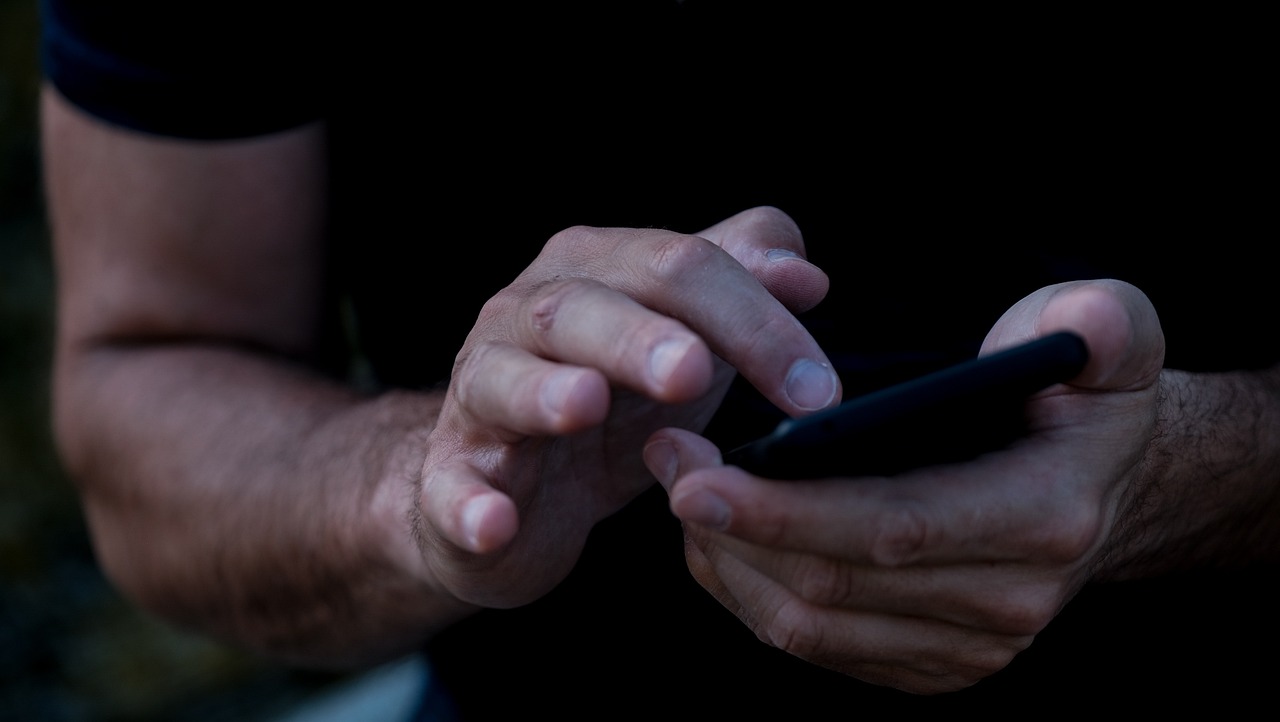Safeguarding Your Online Presence on Social Media
In today's digital age, social media has become an integral part of our lives. From sharing personal milestones to connecting with friends and family, the benefits are undeniable. However, with great connectivity comes the responsibility of safeguarding your online presence. Have you ever thought about how much personal information you share on these platforms? Or considered who might be watching? Protecting your privacy and security on social media is not just a good idea; it's essential. This article explores essential strategies and practices that will help you maintain a safe online identity while still enjoying everything social media has to offer.
One of the first steps in securing your online presence is to understand and adjust your privacy settings on various social media platforms. Each platform has its unique settings that dictate who can see your posts, your profile, and even your friend list. For example, on Facebook, you can customize your audience for each post, allowing you to share content with specific friends or groups while keeping it hidden from others. Similarly, Instagram offers options to make your account private, meaning only approved followers can see your content. Taking the time to familiarize yourself with these settings can significantly enhance your control over your online presence.
Phishing scams are a prevalent threat on social media, and being able to recognize them is crucial for your safety. Cybercriminals often use deceptive tactics to trick users into revealing personal information. Have you ever received an unsolicited message claiming you've won a prize? Or perhaps a friend’s account suddenly starts sending you strange links? These are classic signs of phishing attempts. By staying informed about these tactics, you can protect yourself and avoid falling victim to these malicious schemes.
Phishing attacks come in various forms, each with its unique methods and dangers. Here are some common types:
- Email Phishing: This involves fraudulent emails that appear to be from legitimate sources, asking you to click on links or provide sensitive information.
- Spear Phishing: Unlike general phishing attacks, spear phishing targets specific individuals or organizations, often using personal information to appear more convincing.
- Social Media Impersonation: Scammers create fake profiles that mimic real users to gain trust and trick friends into sharing sensitive data.
Identifying fake profiles is an essential skill in protecting yourself on social media. These profiles often have profile pictures that look too good to be true or lack personal posts and interactions. If a friend suddenly sends you a friend request from a profile that looks suspiciously similar to theirs, it’s worth investigating. Always check mutual friends and look for inconsistencies in their posts. Being vigilant can save you from falling into traps set by malicious actors.
If you encounter suspicious accounts or activities, it’s important to report them. Most social media platforms have straightforward reporting processes that allow users to flag inappropriate behavior or impersonation. By taking this action, you’re not just protecting yourself; you’re also helping to create a safer online environment for others. Remember, you have the power to make a difference!
When it comes to sharing personal information on social media, less is often more. Think about what you really need to share and what can remain private. For instance, while it might be tempting to post about your vacation plans, doing so can make you a target for burglars. Instead, consider sharing your experiences after you return home. Always ask yourself: Is this information necessary for my friends to know? Keeping your personal details close to your chest can significantly enhance your online safety.
Strong, unique passwords are your first line of defense against unauthorized access to your social media accounts. A password should be complex, containing a mix of letters, numbers, and symbols. Avoid using easily guessed information like birthdays or names. Instead, consider using a passphrase that combines unrelated words, making it harder for someone to guess. Remember, the stronger your password, the safer your account.
Password managers can be a game-changer when it comes to managing your online security. These tools securely store and generate complex passwords, so you don’t have to remember each one. By using a password manager, you can create unique passwords for each of your accounts without the fear of forgetting them. It’s like having a personal vault for your digital life, allowing you to focus on enjoying social media instead of worrying about security.
Two-factor authentication (2FA) adds an extra layer of security to your social media accounts. By requiring a second form of verification—like a code sent to your phone—2FA makes it significantly harder for unauthorized users to gain access. Think of it as a double lock on your front door; even if someone has the key (your password), they still can’t get in without the second form of identification. Implementing 2FA is a simple yet effective way to bolster your online security.
Q: What should I do if I think my account has been hacked?
A: Immediately change your password and enable two-factor authentication. Check your account settings for any unauthorized changes and report the incident to the platform.
Q: How can I tell if a friend’s account has been compromised?
A: Look for unusual posts or messages that seem out of character for your friend. If you suspect something is off, reach out to them through another communication method.
Q: Are there any tools to help me manage my privacy settings?
A: Yes, many social media platforms offer privacy checkup tools that guide you through your settings and help you customize your privacy preferences.

Understanding Privacy Settings
In today's digital age, understanding privacy settings on social media platforms is not just a luxury; it's a necessity. Imagine walking through a crowded market, sharing your personal secrets with everyone around you. That's what it feels like when you don't manage your online privacy settings. Each platform has its own unique set of tools and options that allow you to control who sees your content and what information is shared. By diving deep into these settings, you can create a safer online environment for yourself.
First things first, let’s talk about the importance of adjusting your privacy settings. Most social media platforms like Facebook, Instagram, and Twitter allow you to customize your visibility. You can choose to keep your profile private, so only approved friends can see your posts, or you can opt for a public profile, which exposes your information to everyone. The choice is yours, but always remember: with great power comes great responsibility. It’s essential to regularly review your settings, especially after any updates, as platforms often change their privacy policies.
Here’s a quick breakdown of typical privacy settings you should consider:
- Profile Visibility: Decide whether your profile is public or private.
- Friend Requests: Control who can send you friend requests.
- Post Visibility: Choose who can see your posts (friends, friends of friends, or public).
- Tagging Options: Manage who can tag you in photos and posts.
- Location Sharing: Be cautious about sharing your location in posts.
Moreover, it’s crucial to be aware of the consequences of your privacy choices. For instance, if you set your posts to public, anyone can share them, which could lead to unwanted attention or even harassment. Think of your online presence as a house: if you leave the doors wide open, it’s open to anyone passing by. However, if you lock your doors and only invite trusted friends, you can enjoy your space without worry.
Another key aspect of privacy settings is understanding the fine print. Many people skip the terms and conditions, but it’s vital to know what you're consenting to. Some platforms may use your data for advertising or share it with third parties. Understanding these details can help you make informed decisions about what to share and with whom.
Lastly, don’t forget the importance of regularly updating your privacy settings. Just like how you would change the locks on your house after losing a key, it’s wise to revisit your social media settings periodically. This practice ensures that your information remains secure, especially as you add new friends or change your sharing habits.
In conclusion, understanding and managing your privacy settings is essential in safeguarding your online presence. By taking control of who sees your information and how it’s shared, you empower yourself to navigate the social media landscape with confidence. Remember, it’s not just about what you share; it’s about who you share it with. So, take a moment to dive into those settings and customize your online experience today!

Recognizing Phishing Scams
In today’s digital age, phishing scams have become a prevalent threat, making it crucial for you to recognize and avoid them. These scams often masquerade as legitimate communications, tricking unsuspecting users into providing personal information, such as passwords or credit card numbers. Think of phishing as a fishing expedition where the bait is cleverly disguised, and the fish are unsuspecting internet users. The more you know about these tactics, the better equipped you are to protect yourself.
One of the most common ways phishing occurs is through email phishing. Cybercriminals send emails that appear to be from reputable sources, like your bank or a well-known company, urging you to click on a link or download an attachment. Once you do, you might find yourself redirected to a fake website designed to steal your credentials. Always scrutinize the sender's email address and look for any signs of inconsistency, such as misspellings or unusual domains.
Another alarming tactic is spear phishing. Unlike generic phishing attempts, spear phishing is highly targeted. The attackers often gather personal information about you from social media or other online sources to craft messages that seem incredibly credible. For instance, you might receive an email that mentions your recent activity or a mutual friend, making it seem like it’s coming from someone you know. This level of personalization can make it particularly difficult to spot, so always approach unexpected messages with caution.
Social media impersonation is yet another form of phishing that can catch you off guard. In this scenario, a scammer creates a fake profile that mimics someone you trust, like a friend or a colleague. They might send you a message asking for help or offering a fantastic opportunity that requires you to share personal information. If something feels off, it probably is. Always verify the identity of the person before engaging further.
To better understand phishing scams, let’s break down the various forms they can take:
| Type of Phishing | Description |
|---|---|
| Email Phishing | Generic emails that lure users into clicking malicious links. |
| Spear Phishing | Highly targeted emails based on personal information. |
| Social Media Impersonation | Fake profiles that mimic friends or trusted individuals. |
| SMS Phishing (Smishing) | Text messages that trick users into revealing personal data. |
Recognizing these types of phishing attacks is vital. Always be skeptical of unsolicited communications, even if they appear to come from a trusted source. If you receive a suspicious message, take a moment to verify its authenticity before acting.
Identifying fake profiles on social media can be tricky, but there are telltale signs. Look for:
- Profile pictures that seem too generic or stolen from the internet.
- Accounts with few friends or followers, especially if they claim to be someone well-known.
- Unusual activity, such as frequent posts that don’t align with the person’s typical behavior.
When in doubt, reach out to the person through another channel to confirm their identity.
If you encounter suspicious accounts or messages, it’s essential to report them. Most social media platforms have straightforward processes for reporting phishing attempts. By doing so, you not only protect yourself but also help safeguard others in your network. Remember, the more we collaborate in reporting these scams, the harder it becomes for cybercriminals to operate.
In conclusion, recognizing phishing scams is about being vigilant and informed. With the right knowledge, you can navigate the digital landscape more securely and protect your personal information from falling into the wrong hands.

Types of Phishing Attacks
Phishing attacks come in various forms, each designed to trick you into revealing sensitive information. Understanding these types is crucial for your online safety. The most common types of phishing attacks include email phishing, spear phishing, and social media impersonation. Let’s break them down:
Email phishing is the most prevalent form of phishing. In this scenario, attackers send out mass emails that appear to be from legitimate organizations, often mimicking banks or popular online services. These emails typically contain a sense of urgency, prompting you to click on a link or download an attachment. Once you do, malware can be installed on your device, or you may be directed to a fake website designed to steal your login credentials.
Next, we have spear phishing. Unlike the broad net cast by email phishing, spear phishing is more targeted. Cybercriminals gather information about their victims—like their job title, interests, or recent activities—and craft personalized messages that are much harder to detect as fraudulent. For instance, if you’ve recently been in contact with a colleague regarding a project, you might receive an email that seems to come from them, asking you to click on a link for more details. This level of personalization can make it very convincing, and many fall prey to it.
Another alarming tactic is social media impersonation. In this case, attackers create fake profiles on platforms like Facebook, Instagram, or LinkedIn, posing as someone you know or a reputable figure. They may send friend requests or messages, asking for personal information or trying to engage you in conversation that leads to sensitive data being shared. The social aspect of these platforms makes it easy for them to gain your trust.
To help you visualize the differences, here’s a quick comparison table:
| Type of Phishing | Description | Targeting |
|---|---|---|
| Email Phishing | Mass emails that appear legitimate to steal information. | Broad |
| Spear Phishing | Targeted emails using personal information to deceive. | Specific |
| Social Media Impersonation | Fake profiles designed to manipulate users. | Variable |
Being aware of these phishing types is your first line of defense. Remember, if something seems off or too good to be true, it probably is. Always verify the identity of the person or organization reaching out to you, especially if they request sensitive information. The more informed you are, the less likely you are to fall victim to these deceptive schemes.
- What should I do if I receive a suspicious email? - Do not click on any links or download attachments. Report it to your email provider and delete it.
- How can I tell if a social media profile is fake? - Look for inconsistencies in profile pictures, unusual friend lists, or posts that seem out of character for the person they are impersonating.
- Is it safe to click on links in emails from known contacts? - Always double-check by contacting them through another method, like a phone call or text, before clicking on any links.

Spotting Fake Profiles
In the vast ocean of social media, fake profiles are like jellyfish—often lurking unnoticed until they sting you. The ability to spot these deceptive accounts is crucial for your online safety. But how can you differentiate between a genuine user and a cleverly crafted fake? First, take a moment to examine the profile closely. Look for inconsistencies in the profile picture; many fake accounts use stock photos or images stolen from real users. You can use reverse image search tools to verify whether the photo is authentic or has been used elsewhere.
Next, consider the profile's activity. Genuine accounts typically have a history of interactions—posts, comments, and likes that reflect real engagement. In contrast, fake profiles may have very few posts or interactions, and their content often seems generic or overly promotional. If the profile seems to be solely focused on selling products or services, that's a red flag. It's like a stranger at a party who only talks about their business without showing any interest in you—suspicious, right?
Another important aspect to consider is the follower count. Fake profiles often have inflated follower numbers, but their engagement rates are usually low. For instance, a profile with thousands of followers but only a handful of likes and comments on each post may not be genuine. You can think of it as a popular restaurant that has a long line outside but serves terrible food—it's all about appearances!
Additionally, pay attention to the language and tone of the posts. Fake profiles often use poor grammar or awkward phrasing, as they may be operated by bots or individuals who aren't fluent in the language. A genuine user will communicate in a way that feels natural and relatable. If something feels off, trust your instincts—your gut feeling is often your best defense against deception.
Lastly, don't hesitate to ask questions. If you're unsure about someone, engage them in conversation. Genuine users will respond thoughtfully, while fake profiles may provide vague or evasive answers. It's like trying to strike up a conversation with someone at a coffee shop; if they seem uninterested or distracted, it’s a sign to move on.
To summarize, here are some key indicators to look for when spotting fake profiles:
- Profile Picture: Check for stock photos or images used elsewhere.
- Activity Level: Look for genuine interactions and a history of posts.
- Follower Count vs. Engagement: High followers but low engagement is a red flag.
- Language Quality: Poor grammar may indicate a fake profile.
- Engagement: Ask questions to gauge the authenticity of the user.
By being vigilant and aware of these signs, you can significantly reduce the risk of falling victim to fake profiles. Remember, just like in real life, if something seems too good to be true, it probably is. Protecting your online presence is not just about avoiding scams—it's about creating a safe and enjoyable social media experience.
Q: What should I do if I encounter a fake profile?
A: You should report the profile to the social media platform immediately. Most platforms have a straightforward process for reporting suspicious accounts.
Q: Can fake profiles steal my information?
A: Yes, fake profiles can attempt to gain your personal information through various tactics, including phishing scams or by simply asking for sensitive data.
Q: How can I protect myself from fake profiles?
A: Always verify profiles before engaging, be cautious about sharing personal information, and regularly update your privacy settings.

Reporting Suspicious Activity
In the vast landscape of social media, where connections are made and information is shared at lightning speed, it’s crucial to stay vigilant about suspicious activities. If you ever encounter something that feels off—like a friend suddenly sending you strange links or an account that seems too good to be true—don’t just scroll past it. Reporting such activities is not only a way to protect yourself, but it also helps safeguard the community as a whole.
First, it’s important to recognize what constitutes suspicious activity. This can include:
- Unusual messages from friends or followers.
- Accounts that mimic your friends or well-known brands.
- Requests for personal information or money.
- Spammy posts that seem out of character for the account.
When you spot something suspicious, the next step is to report it. Most social media platforms have built-in features designed for this purpose. For instance, on Facebook, you can click on the three dots on a post and select "Report." On Instagram, you can tap the three dots on a profile and choose "Report User." Each platform has its own specific process, but they all aim to keep the environment safe.
Reporting is not just a one-and-done deal. You might want to follow up with your friends, especially if they’re the ones being targeted. A quick message saying, "Hey, I noticed some weird activity on your account!" can go a long way. Remember, the more people who report suspicious accounts, the quicker platforms can take action. This collective effort can help in identifying and shutting down malicious accounts before they can do significant harm.
Additionally, it’s beneficial to educate yourself and others about the signs of suspicious behavior. Share tips with your friends and family on how to recognize phishing attempts or fake accounts. The more informed everyone is, the harder it becomes for cybercriminals to thrive. Think of it as building a digital fortress; the stronger your defenses, the safer your online experience will be.
In conclusion, reporting suspicious activity is a vital part of maintaining a secure social media presence. By being proactive and encouraging others to do the same, you contribute to a safer online community. So, the next time you encounter something that raises your eyebrows, don’t hesitate—report it!
- What should I do if I receive a suspicious message?
If you receive a suspicious message, do not click on any links. Instead, report the message to the platform and inform the sender that you believe their account may be compromised.
- How can I tell if a profile is fake?
Look for signs such as a lack of personal photos, generic usernames, and an unusually high number of followers with little engagement. If something feels off, trust your instincts.
- Can I report someone anonymously?
Yes, most social media platforms allow you to report accounts anonymously, so you don’t have to worry about any backlash.

Protecting Personal Information
This article explores essential strategies and practices for protecting your privacy and security while engaging on social media platforms, helping you maintain a safe online identity.
Learn how to navigate and adjust privacy settings on popular social media platforms to enhance your control over who sees your content and personal information.
Identify common phishing tactics used by cybercriminals to steal your information and discover how to avoid falling victim to these deceptive schemes.
Explore various forms of phishing attacks, including email phishing, spear phishing, and social media impersonation, to better understand their methods and dangers.
Gain insights into identifying fake profiles that may attempt to deceive or manipulate you for malicious purposes on social media.
Understand the process of reporting suspicious accounts and activities on social media platforms to help protect yourself and others.
When it comes to social media, protecting your personal information is like putting on a seatbelt before driving—it's a crucial step that can save you from potential harm. In a world where oversharing is the norm, it's essential to remember that not everything needs to be public. Start by reviewing your profiles and consider what information you really want to share. For instance, your birthday, address, and phone number might seem harmless, but they can be tools for identity theft if they fall into the wrong hands.
Here are a few tips to help you safeguard your personal information:
- Adjust Your Privacy Settings: Most social media platforms allow you to customize who can see your posts and personal information. Make sure to limit your audience to friends or select groups.
- Be Wary of Friend Requests: If someone you don't know sends you a friend request, take a moment to investigate their profile. Look for signs of a fake account, such as few friends, generic photos, or suspicious posts.
- Think Before You Post: Ask yourself, "Would I be comfortable sharing this with a stranger?" If the answer is no, then reconsider posting it.
In addition to these practices, be mindful of the information you share in comments or messages. Even seemingly innocuous details can be pieced together by malicious actors to build a profile of you. For example, mentioning your workplace or favorite hangout can give away more information than you intended.
Moreover, consider the implications of tagging locations in your posts. While it may seem fun to share your latest vacation spot, it can also reveal your whereabouts to anyone who might be watching. It’s like leaving a digital breadcrumb trail leading right to your door. Instead, wait until you’re back home to share those memories.
Finally, remember that your online presence extends beyond just social media. Be cautious about connecting your social media accounts to other platforms or apps. Each connection can potentially expose your personal information to more people than you realize. Always choose to share only what is necessary and regularly audit your connected accounts.
Learn the importance of strong, unique passwords for your social media accounts and how to manage them effectively to enhance your security.
Explore the benefits of using password managers to securely store and generate complex passwords for your social media accounts.
Understand how two-factor authentication adds an extra layer of security to your social media accounts, making it harder for unauthorized users to gain access.
Q: What should I do if I suspect my account has been hacked?
A: Immediately change your password, enable two-factor authentication, and notify the platform of any suspicious activity.
Q: How can I tell if a friend’s account has been compromised?
A: Look for unusual posts, messages that seem out of character, or any requests for money. If you notice anything odd, reach out to your friend through another means to verify.
Q: Is it safe to use my social media accounts for logging into other apps?
A: While convenient, it can expose your account to risks. Ensure that the app is reputable and consider using a password manager instead.

Creating Strong Passwords
In today's digital age, crafting strong passwords is like building a fortress around your online identity. You wouldn’t leave your front door wide open, would you? Similarly, a weak password can be an open invitation for cybercriminals to waltz right into your accounts. So, let's dive into the nitty-gritty of what makes a password strong and how you can create one that stands the test of time.
First off, a strong password should be at least 12 characters long. The longer, the better! Think of it as a long, winding road that’s hard to navigate. A combination of uppercase letters, lowercase letters, numbers, and special characters is essential. For instance, instead of using "password123," try something like "P@ssw0rd!2023". This mix not only makes it complicated but also adds layers of security.
Another critical aspect is avoiding easily guessable information. Your name, birthday, or even your pet's name can be the first things hackers will try. So, steer clear of using personal details that could be linked back to you. Instead, consider using a passphrase—a sequence of random words or a memorable sentence. For example, “BlueSky!Dances@Night” can be both memorable and strong.
Now, you might be wondering, "How do I keep track of all these complex passwords?" That’s where password managers come into play. These handy tools can generate and store your passwords securely, so you only need to remember one master password. Think of them as your personal vault, keeping all your treasures safe and sound.
Additionally, it’s vital to change your passwords regularly. Just like you wouldn’t wear the same outfit every day, your passwords need a little refresh now and then. A good rule of thumb is to change them every three to six months. If you hear about a data breach involving a service you use, change your password immediately. It’s like changing the locks after losing your keys!
Lastly, consider implementing two-factor authentication (2FA) wherever possible. This adds an extra layer of security by requiring a second form of verification, such as a code sent to your phone. It’s like having a bouncer at the door who checks IDs before letting anyone in.
In summary, creating strong passwords is a crucial step in safeguarding your online presence. Remember to use a mix of characters, avoid personal information, utilize password managers, change your passwords regularly, and enable two-factor authentication. By doing so, you’ll be well on your way to building a robust defense against cyber threats.
- What is a strong password? A strong password typically contains at least 12 characters, including a mix of uppercase letters, lowercase letters, numbers, and special characters.
- How often should I change my passwords? It’s recommended to change your passwords every three to six months or immediately after a data breach.
- Are password managers safe to use? Yes, password managers are designed to securely store and encrypt your passwords, making them a safe option for managing your credentials.
- What is two-factor authentication? Two-factor authentication adds an additional layer of security by requiring a second form of verification, such as a code sent to your mobile device.

Using Password Managers
In today's digital landscape, where our lives are intertwined with technology, safeguarding our online accounts has never been more critical. One of the best ways to enhance your security is by using password managers. But what exactly is a password manager, and how can it make your online experience safer? Think of a password manager as a digital vault that securely stores your passwords, making it easier for you to manage them without the hassle of remembering each one. Instead of using the same password across multiple platforms (which is like using the same key for your house, car, and office), a password manager allows you to create unique, complex passwords for every account you own.
When you sign up for a new service or social media account, a password manager can generate a strong password for you, typically consisting of a mix of letters, numbers, and symbols. This is essential because weak passwords are one of the leading causes of account breaches. Moreover, many password managers come with features that automatically fill in your login credentials, saving you time and reducing the risk of falling prey to phishing scams. Imagine never having to type out your passwords again—sounds convenient, right?
Another fantastic aspect of password managers is their ability to sync across multiple devices. Whether you’re on your laptop, tablet, or smartphone, you can access your passwords seamlessly. This means that even if you’re on the go, your accounts are still secure, and you can log in without a hitch. However, it's crucial to choose a reputable password manager, as not all are created equal. Look for one that offers strong encryption, a user-friendly interface, and a good track record of security.
Here’s a quick overview of some popular password managers:
| Password Manager | Key Features | Platform Availability |
|---|---|---|
| LastPass | Free and premium versions, password sharing, secure notes | Web, iOS, Android |
| 1Password | Travel mode, password generator, secure document storage | Web, iOS, Android, Windows, Mac |
| Dashlane | Dark web monitoring, VPN, password health reports | Web, iOS, Android, Windows, Mac |
While using a password manager can significantly enhance your security, it’s important to remember that no system is foolproof. Always use a strong master password to protect your password manager itself, and consider enabling two-factor authentication (2FA) for an added layer of security. By combining these strategies, you can create a robust defense against potential cyber threats. So, are you ready to take control of your online security with a password manager? It’s a small step that can lead to big changes in how you protect your digital life.
- What is a password manager? A password manager is a software application designed to store and manage your passwords in a secure manner.
- Are password managers safe? Yes, most reputable password managers use strong encryption to protect your data, making them safer than writing passwords down or using the same password for multiple accounts.
- Can I use a password manager on multiple devices? Absolutely! Many password managers offer syncing capabilities across different devices, allowing you to access your passwords wherever you are.
- What should I look for in a password manager? Look for features like strong encryption, cross-platform compatibility, user-friendly interfaces, and good customer reviews.

Two-Factor Authentication
Two-Factor Authentication (2FA) is like having a double lock on your front door; it provides an extra layer of security that can significantly reduce the risk of unauthorized access to your social media accounts. In a world where cyber threats are as common as morning coffee, relying solely on a password is no longer enough. Think of your password as the key to your house; while it’s important, it can be lost or stolen. 2FA ensures that even if someone gets their hands on your key, they still can’t enter without the second form of verification.
So, how does 2FA work? When you enable this feature, you’ll be required to provide two different types of information before gaining access to your account. Typically, this involves something you know (like your password) and something you have (such as a code sent to your mobile device or generated by an authentication app). This means that even if a hacker manages to guess your password, they would still need your phone to gain access, making it much more difficult for them to succeed.
Many social media platforms offer various methods for 2FA, allowing you to choose the one that suits you best. Here are some common options:
- SMS Codes: Receive a text message with a verification code each time you log in.
- Authentication Apps: Use apps like Google Authenticator or Authy to generate time-sensitive codes.
- Email Verification: Receive a code via email, although this method is generally less secure than the others.
Implementing 2FA is simple. Most platforms have user-friendly steps to guide you through the process. Once activated, you’ll notice a significant boost in your account’s security. However, it’s essential to keep in mind that while 2FA greatly enhances your security, it’s not foolproof. Always stay vigilant and regularly review your account activity for any suspicious behavior.
In conclusion, enabling Two-Factor Authentication is a straightforward yet powerful step you can take to safeguard your social media presence. It’s like adding a security alarm system to your home; it won't stop all intruders, but it certainly makes it a lot harder for them to get in. Make it a habit to prioritize your online security, and you'll be well on your way to enjoying a safer social media experience.
Here are some common questions people have about Two-Factor Authentication:
- Is Two-Factor Authentication really necessary? Yes, it adds an essential layer of security that can protect your accounts from unauthorized access.
- What if I lose my phone? Most platforms provide backup codes you can use to access your account if you lose your phone.
- Can I disable Two-Factor Authentication? Yes, you can disable it, but it's highly recommended to keep it enabled for better security.
Frequently Asked Questions
- What are the best privacy settings for social media?
To enhance your privacy on social media, start by reviewing the privacy settings of each platform. Adjust who can see your posts, limit friend requests to known contacts, and consider setting your profile to private. Always keep an eye on app permissions and remove any that seem unnecessary.
- How can I recognize a phishing scam?
Phishing scams often come in the form of unsolicited messages that urge you to click on links or provide personal information. Look for poor grammar, generic greetings, and suspicious URLs. If something feels off, trust your instincts and verify the source before taking any action.
- What types of phishing attacks should I be aware of?
There are several types of phishing attacks, including email phishing, where attackers send fake emails to steal information, spear phishing, which targets specific individuals, and social media impersonation, where scammers create fake profiles to deceive users. Awareness is key to protection!
- How can I spot fake profiles on social media?
To identify fake profiles, look for signs such as a lack of personal photos, minimal posts, and generic information. If a profile is overly eager to connect or shares suspicious links, it’s best to proceed with caution. Always double-check mutual friends and verify their credibility.
- What should I do if I encounter suspicious activity?
If you notice suspicious accounts or activities, report them immediately through the platform's reporting feature. This helps protect not only you but also others who may be targeted. Stay vigilant and encourage your friends to do the same!
- How can I protect my personal information on social media?
Be mindful of what you share online. Only disclose essential information and avoid posting sensitive details like your address or phone number. Regularly review your privacy settings to ensure they align with your comfort level regarding information sharing.
- Why are strong passwords important?
Strong passwords are crucial because they act as the first line of defense against unauthorized access to your accounts. A unique password for each account reduces the risk of a domino effect if one password is compromised. Aim for at least 12 characters, mixing letters, numbers, and symbols!
- What are the benefits of using a password manager?
Password managers securely store and generate complex passwords for your accounts, making it easier to maintain strong, unique passwords without the hassle of remembering them all. They also help you fill in passwords automatically, saving time and enhancing security.
- How does two-factor authentication work?
Two-factor authentication (2FA) adds an extra layer of security by requiring not just your password but also a second piece of information, like a code sent to your phone. This makes it significantly harder for unauthorized users to access your accounts, even if they have your password.



















